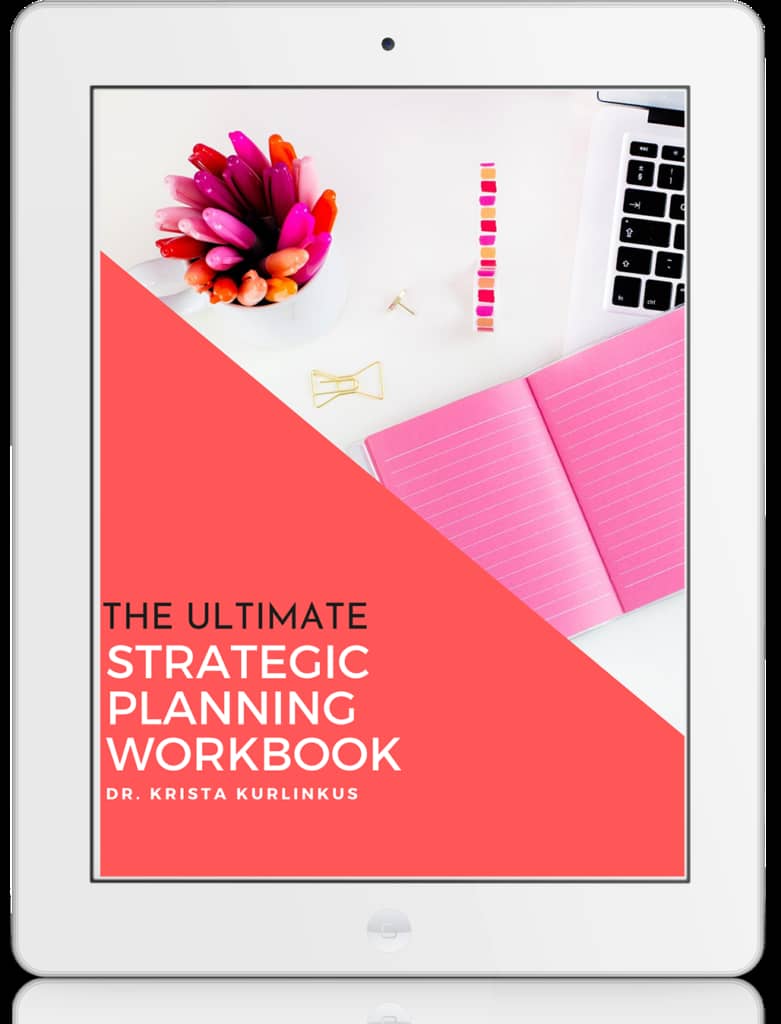Having a strategic plan is essential for any business organization, for-profit and nonprofit alike.
Of course, a strategic plan helps organizations define our vision, goals, and strategies that will make it possible for us to serve our community.
A strategic plan helps you determine each of those essential elements and more. It acts as a blueprint for your organization.
And an organization with a strong blueprint that they are able to follow is always more appealing to grantmakers. There is so much competition for grants right now, even amongst small local grantmakers that they are only funding organizations that can prove capacity and sustainability.
You might be thinking: Where does the strategic plan actually show up in the grant application?
Some grants do ask for a copy of your nonprofit’s current strategic plan.
And, trust me, a strategic plan is not something you can throw together at the last minute for a grant application.
But even when it’s not required by grantmakers, it’s still something that impacts every single section of your grant application and shows that your organization has cohesive:
- Vision and Mission Statements
- Goals or Priorities
- Objectives
- Strategies or Action Plan
- Budget, Program Evaluation Methods, and Plans for Sustainability
Here are some organizational goals that would show up in both your strategic plan and multiple parts of your grant application:
- Serving more people
- Stabilizing our budget
- Increasing our organizational capacity
- Addressing new problems that arose from external factors beyond our control
- Changing our services or programs
- Developing new programs
- Building a stronger board of directors that participate and contribute more financially
- Transitioning to new leadership
- Improving our impact
- Figuring out our pain points and next steps for growth
You’ll notice that the first 9 are somewhat concrete in what you hope to accomplish. The only way to know that these are overall goals for the end of the planning process before you start the planning process is to know that these goals will address issues you are already having. So for #2, for example, you might know that you had a budget shortfall last fiscal year or that your cash flow is unstable.
If you don’t know what your current problems or pain points are in your organization, then you might go with goal #10, which is to figure them out as part of the initial planning process.
So what are your next steps?
Grantmakers are pros at recognizing the lack of a strategic plan or a weak strategic plan just from how goals like these inform each section of your grant application.
For example, if you are trying to serve more people in the next few years, have you allocated more funding in your organizational budget for the expenses required to do that?
If not, this shows that you and your team weren’t really thinking about this goal when you planned for the year or you haven’t made a plan at all.
So if you don’t already have a strategic plan for your nonprofit, it’s past time to make one!
If you already have a strategic plan but it hasn’t been updated in the last year or two, then it’s time to start updating.
Right now, my Ultimate Strategic Planning Workbook and Slide Deck are on sale!

Right now, the workbook is $20 and the slide deck is just $10. (You have the option to add the slide deck to your workbook order at checkout.)
The workbook and slide deck are digital downloads that you will receive immediately upon purchase.
Now is the time to get the strategic planning process started, as it will take several months and you will want to have a plan in place by the start of 2021.






